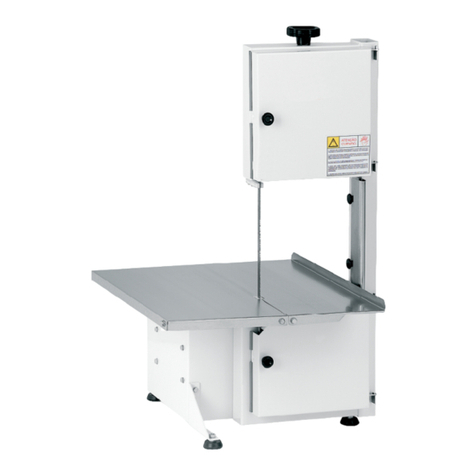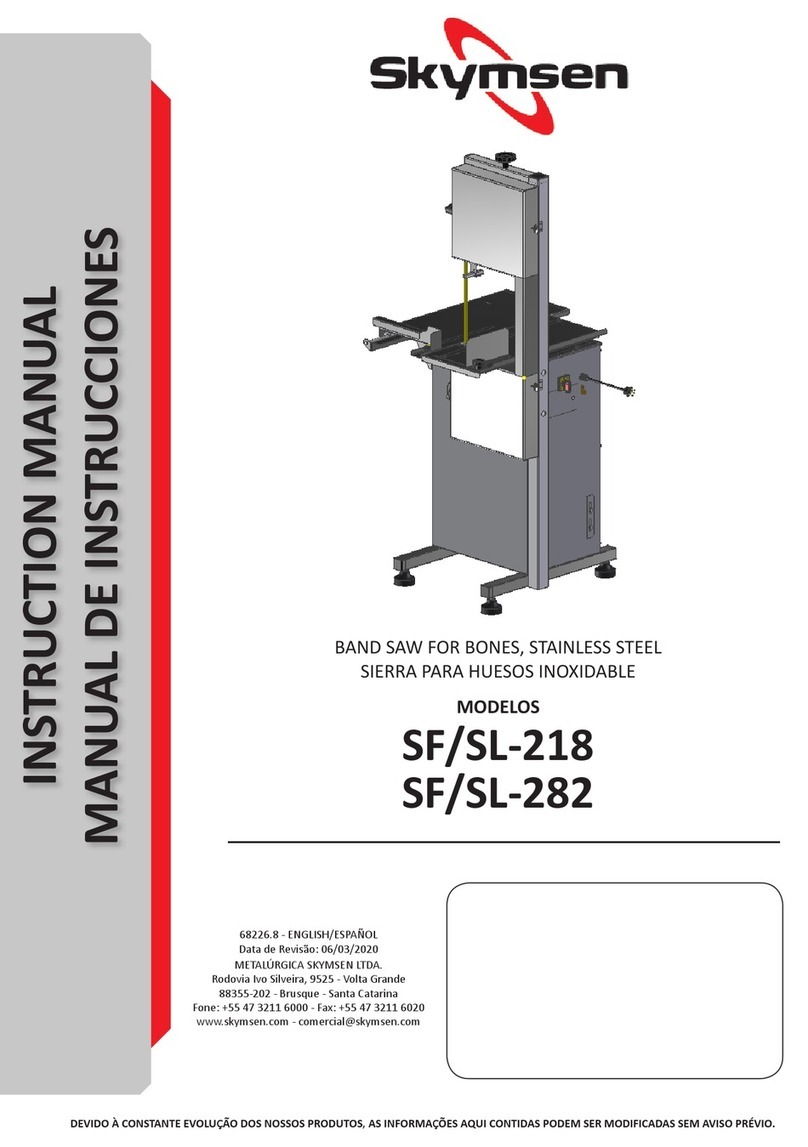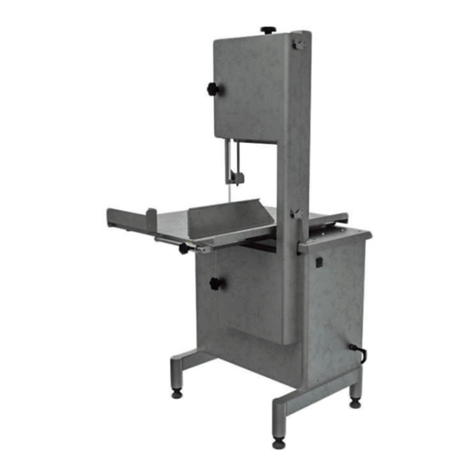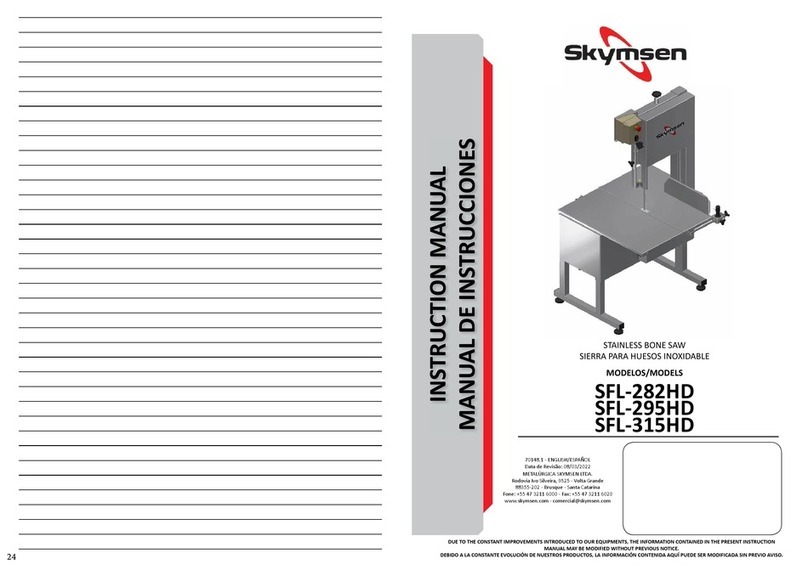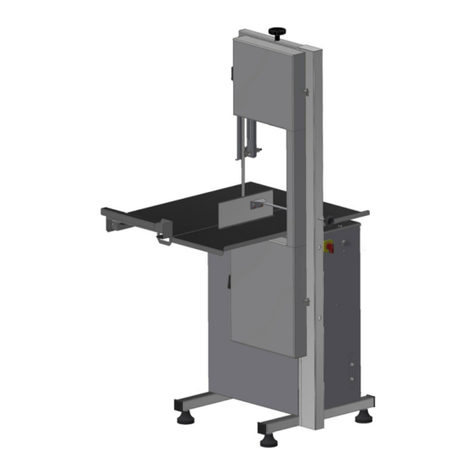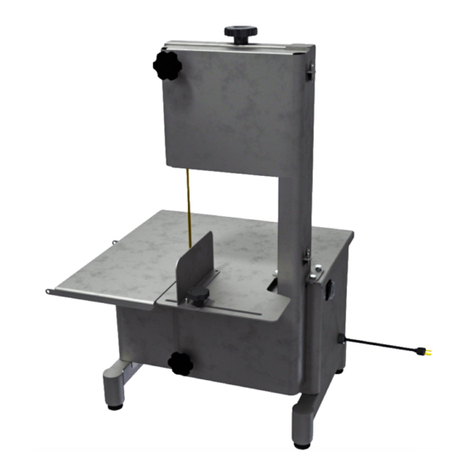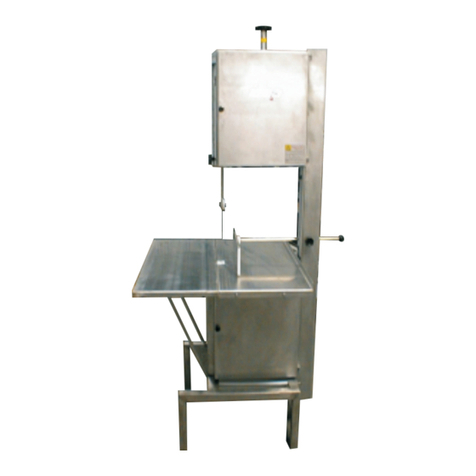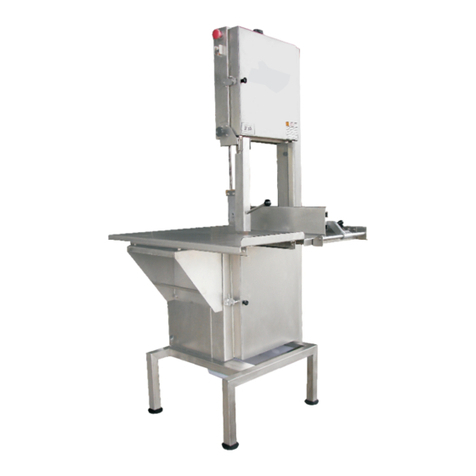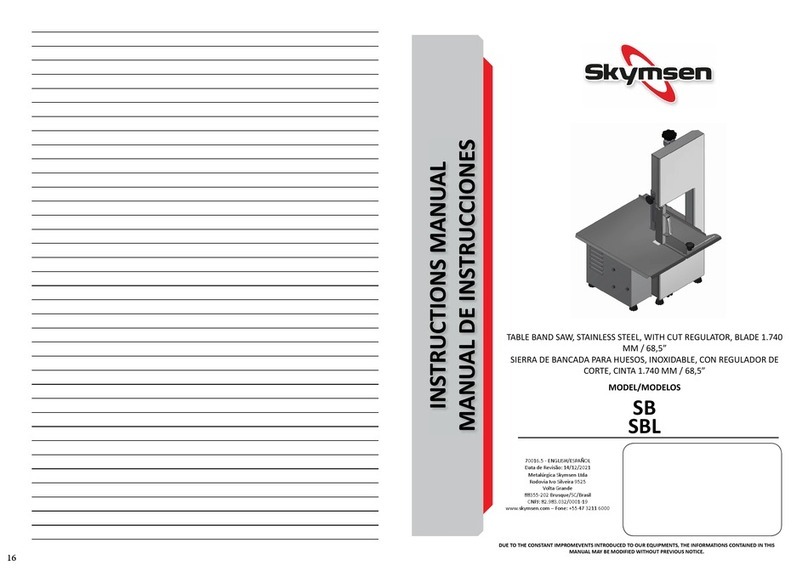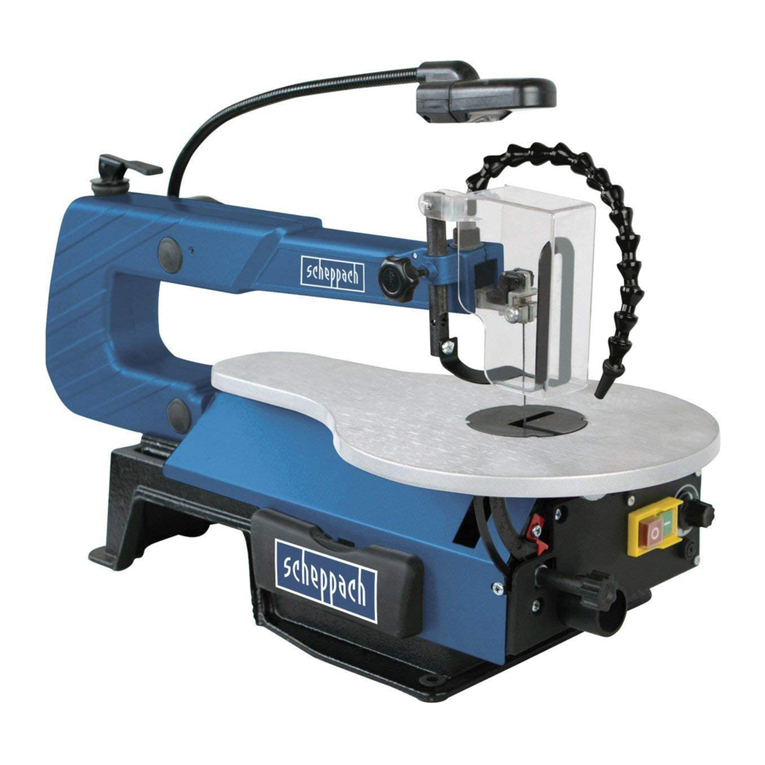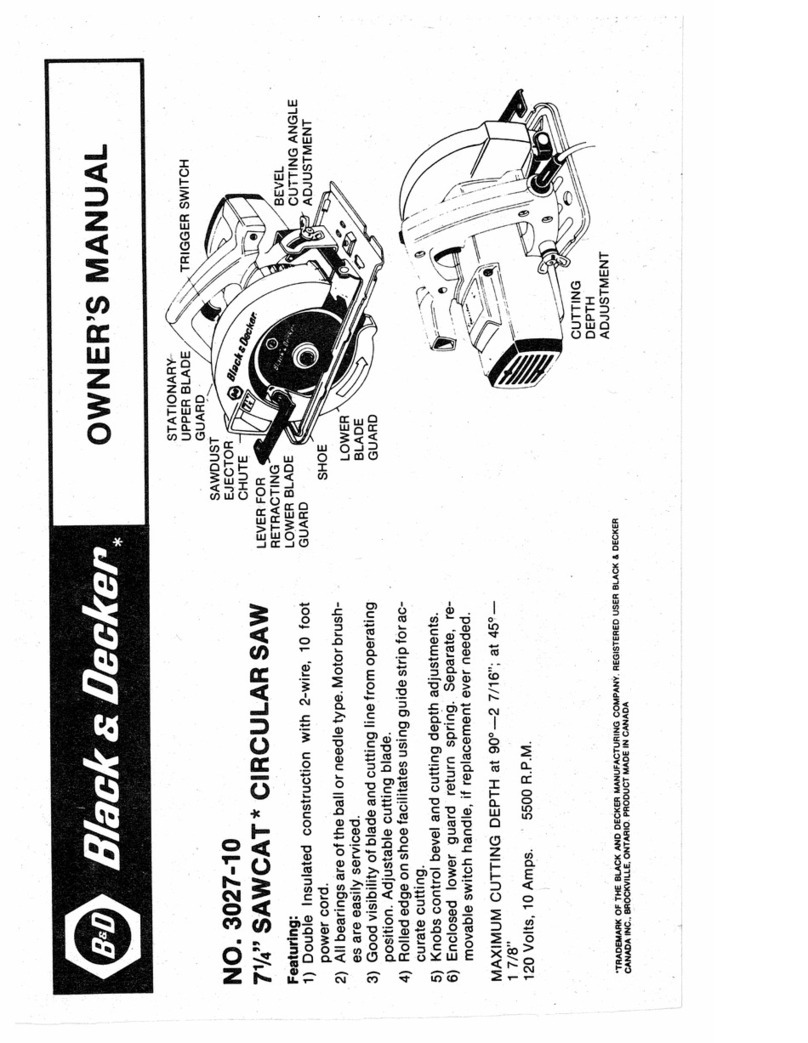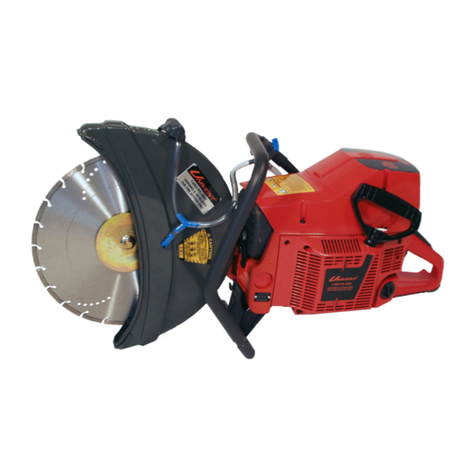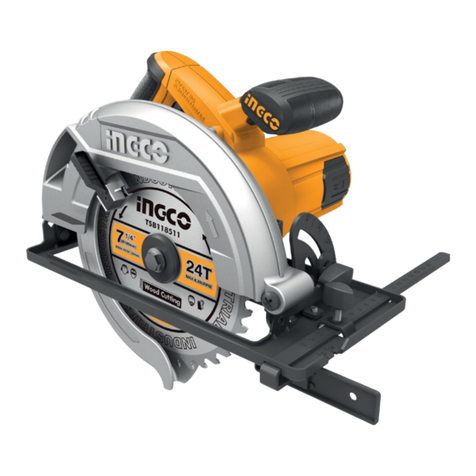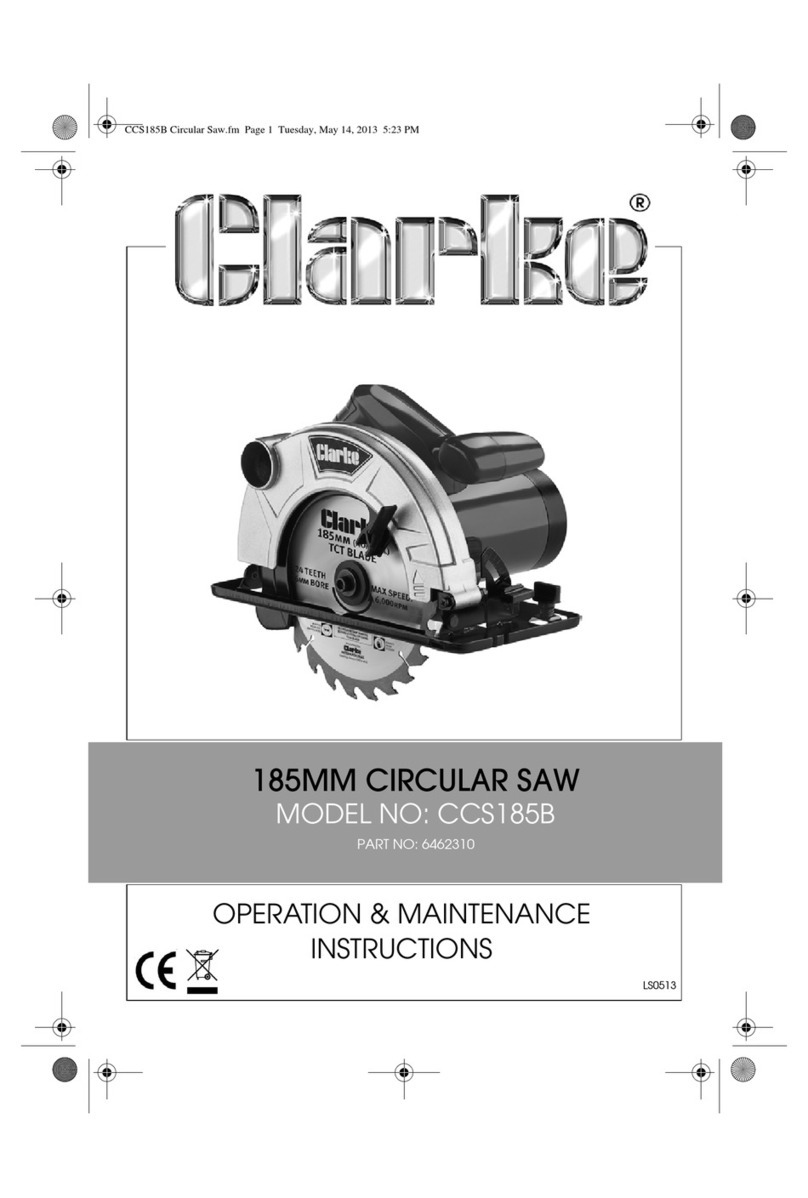
9
This scraper cleans the bone dust or the residues from the blade during the operaon. The
scraper may be removed for cleaning (see item 3.3 cleaning).
2.2.7 Lower Wheel
The Lower Wheel #. 17 (Pic.01) is assembled on the lower bearing sha and xed by the
staple #. 10 (Pic.01). The staple shall always be placed in the sha slit.
The lower wheel may be removed for cleaning aer removing the blade.(see item 3.3
Cleaning).
2.2.8 Upper Wheel.
The Upper Wheel #.05 (Pic.01) frame has its own sha and bearings.
Therefore the Upper Wheel has to be removed with the sha and bearing for cleaning (see
item 3.3 Cleaning), only aer the Blade has been taken o.
3. OPERATION
3.1 Pre-Operaon
3.1.1 Check if the saw is standing rm in its posion
3.1.2 Adjust the Blade Guide # 07 (Pic.01) height to meet the meat piece thickness.
3.1.3 Doors and Blade Guard
The upper door #.04 (Pic.01), the Lower Door #. 15 (Pic.01) and the Blade Guard #18
(Pic.01) shall be closed and in their right posion while the saw is operang...
3.1.4 Thickness Guide
To obtain several slices with the same thickness, adjust the Thickness Guide #.13 (Pic.01) as
desired. Turn the Thickness Guide Handle counter clockwise loosing the Thickness Guide,
and drive it to the desired thickness. Then ght back the handle.
3.1.5 Control Board.
The ON/OFF Switch # 02 (Pic.01) and the Emergency Buon Switch #.03 (Pic,01) are placed
on a control board, on the motor housing upper front side.
To turn ON the saw press the ON/OFF Switch (green) buon to posion “I”..
To stop the saw operaon press the ON/OFF Switch (red) buon to posion ”O”.
If an emergency case arises, press the EMERGENCY buon, immediately stopping the saw
operaon.
3.2 Operang process
Before to start the Saw
- Pull totally the Movable Table # 09 (Pic.01) toward the saw front side..
- Place the meat on the Movable Table.
